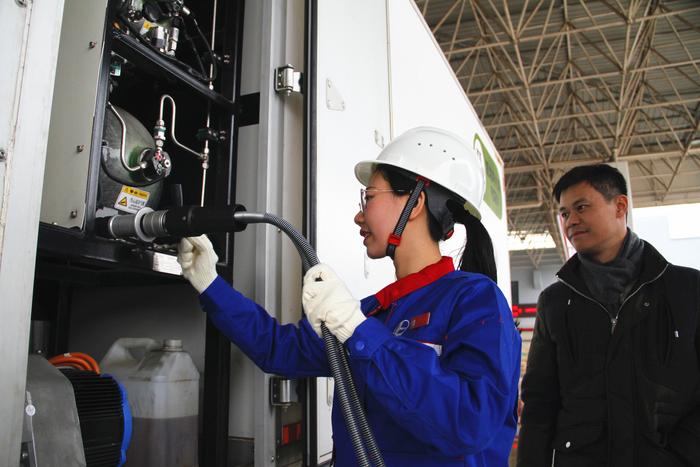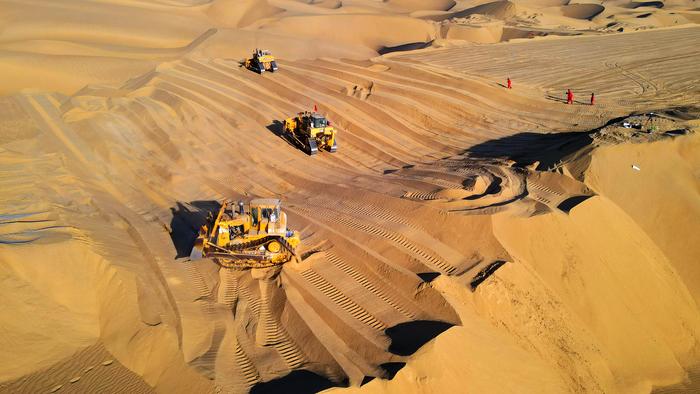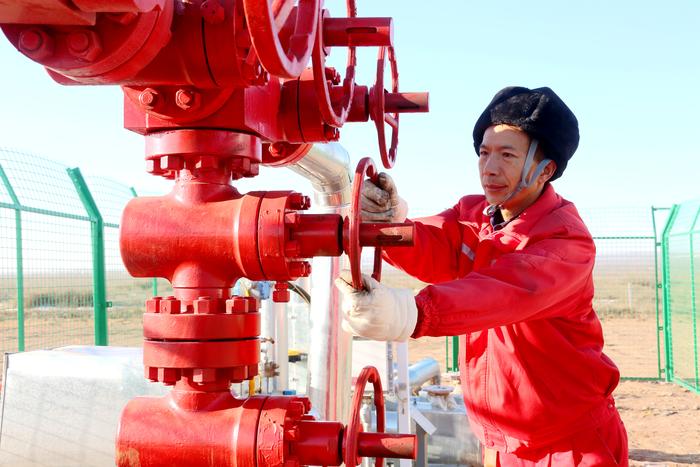|
| 2020-12-21 来源: 中国石化新闻网 |
| 石化新闻 |
中国石化新闻网讯 据今日油价12月17日报道,由于市场面临前所未有的需求损失,石油价格陷入危机,埃克森美孚宣布在南美洲东部海岸苏里南地区获得了一系列新发现,这对欧佩克产油国和投资者来说无疑是雪上加霜。但尽管危机不断,海上石油勘探仍有可能蓬勃发展。在2014-2015年油价暴跌期间,海上石油钻探是受影响最大的领域之一。海上钻井公司破产,勘探项目被搁置,员工被解雇,随后石油公司转向其他削减成本的方法,比如开发提高钻井效率的技术解决方案。 距离上次金融危机已经过去五年了,尽管石油需求暴跌对钻井平台所有者造成了沉重打击,但近海钻井活动仍然非常活跃,而且成本比以往任何时候都低。Rystad Energy的数据显示,2014年至2018年间,海上石油开发的盈亏平衡成本下降了约30%,目前低于美国页岩油开发的平均盈亏平衡成本。由于页岩油是开发成本较高的石油资源之一,这可能说明不了什么,但它表明了一个清晰的事实,即海上石油开采成本越来越低。 让人惊讶的是,石油公司正利用这一趋势,而不是等待着油价风暴过去。就在上周,埃克森美孚宣布在圭亚那-苏里南盆地获得了最新发现。该公司与马来西亚国家石油公司(Petronas)合作,在苏里南近海的一个勘探区块发现了石油和天然气。 该公司还宣布在圭亚那的勘探将是其未来优先发展的领域之一,此外还有美国的页岩油气勘探、巴西地区的勘探等。在历史上最严重的油价危机爆发之际,这种调整非常重要,意味着该行业将真正专注于盈利能力最强的业务部门。埃克森美孚并不是唯一一家在疫情期间大力押注海上勘探的公司。巴西国家石油公司在11月份表示,该公司计划在未来五年将重点放在深水资源的勘探和生产上,同时还宣布下调这一时期的支出计划。 这家巴西巨头在一份文件中表示,未来五年将支出550亿美元,其中,84%将用于勘探和生产,且其中大部分项目位于多产的盐下地区,据估计,盐下地区蕴藏着数十亿桶未发现的石油资源。巴西石油公司还计划将业务扩展到圭亚那地区。值得注意的是,这一计划目前尚处于试探性阶段的原因是巴西的监管阻碍。然而,圭亚那的海上石油开发潜力不可能被忽视,巴西与圭亚那的北部地区拥有相近的海上地质条件。 巴国油首席执行官Roberto Castello Blanco在最近的一次行业会议上表示:“我们在巴西北部有巨大的石油开发潜力,但我们被拒之门外。与此同时,圭亚那正在利用这一机会。” 与此同时,尽管需求持续下滑,但挪国油Equinor在北海Johan Sverdrup油田的日产量超过40万桶,截至上月已接近50万桶。这家挪威公司还提高了Snorre油田的产量,增加了2亿桶可采储量,并将该油田的使用寿命延长到2040年。事实上,挪国油正在与自然损耗和石油新发现的减少作斗争。在国内外石油需求下降的背景下,海上勘探活动的发展提振了石油产量,不过,市场预计这种需求下降将持续下去。 美国也在鼓励更多的近海钻探,美国安全和环境执法局(Bureau of Safety and Environmental Enforcement)本月初表示,将向提高资产产能的海上油田运营商许可较低的特许权使用费。其目标是最大限度地提高这些油田的产能。值得注意的是,石油需求暴跌,油价也随之暴跌。 传统上,海上石油是成本最高的石油生产领域之一,但它通过延长资产生产寿命来弥补了不足。然而,石油和天然气的开采成本一直在下降,这包括海上石油的开采。根据Rystad Energy的数据,迄今为止,深水石油是世界上第二便宜的石油,仅次于中东陆上石油,后者的盈亏平衡价格约为每桶30美元。深水石油的平均盈亏平衡价格是43美元/桶。 这是一个好消息,因为世界上大部分尚未开发的石油储量都位于近海地区,尽管对需求的预测较为悲观,但许多人认为,未来几十年,世界将继续需要数千万桶石油,而这几千万桶原油,即使没有大部分也有会有比较多的石油将来自近海油田。 王佳晶 摘译自 今日油价 原文如下: Offshore Oil’s Dramatic Comeback Smack dab in the middle of an oil price crisis caused by an unprecedented demand loss, Exxon announced the latest in a string of discoveries off the eastern South American shore, this time in Suriname. It must have felt like adding insult to injury for OPEC producers and reckless behavior for investors, but offshore oil may yet thrive despite the crisis. During the 2014-2015 oil price collapse, offshore oil drilling was one of the most affected areas. Offshore drilling companies went bankrupt, exploration projects were shelved, and staff was laid off. And then oil companies turned to other ways of cutting costs, such as developing technological solutions that boosted drilling efficiency. Five years after the last crisis, despite a heavy blow to rig owners from the slump in oil demand, offshore drilling is very much alive and cheaper than ever. According to Rystad Energy, the breakeven cost of offshore oil fell by about 30 percent between 2014 and 2018 and is now lower than the average breakeven for U.S. shale oil. That may not be saying a lot since shale is among the higher-cost oil resources, but it is saying something loud and clear: offshore oil is getting cheaper to extract. It may be surprising that oil companies are taking advantage of this trend instead of lying low and waiting for the price storm to pass. Exxon announced its latest discovery in the Guyana-Suriname Basin just last week. Together with Malaysia’s Petronas, the supermajor discovered oil and gas in an exploration block offshore Suriname. The company also announced Guyana exploration will be among its priority areas going forward, along with U.S. shale, exploration in Brazil, and chemicals. This re-prioritization is important as it comes amid the worst oil price crisis in history, meaning the industry is really focusing on the most profitable business divisions. Exxon is not the only one betting strongly on offshore exploration amid the pandemic. Brazil’s Petrobras is planning a focus on deepwater exploration and production for the next five years, the company said last month, when it also announced a downward revision to its spending program for the period. The Brazilian major said in a filing that it will spend $55 billion over the next five years, down by 27 percent in 2019. Of the total, 84 percent would go towards exploration and production, most of it in the prolific pre-salt zone, which is estimated to hold billions of barrels of undiscovered oil. And this is not all: Petrobras has plans to expand into Guyana. In all fairness, the reason for this plan—tentative for the time being—is regulatory hurdles in Brazil. Yet Guyana’s offshore potential could not have passed unnoticed by the state oil company of the tiny nation’s huge neighbor, which shares offshore geology with it in the north. “We have (in northern Brazil) the potential for a great oil basin and we’re barred. At the same time, Guyana is taking advantage of the situation,” Petrobras’ chief executive Roberto Castello Blanco said at a recent industry conference as quoted by Reuters. Meanwhile, in the North Sea, Equinor is pumping more than 400,000 bpd from the Johan Sverdrup field, nearing 500,000 bpd as of last month, despite the continued demand slump. The Norwegian company is also boosting production at the Snorre field, unlocking an additional 200 million barrels of recoverable reserves and extending the field’s life to 2040. Indeed, Equinor is fighting natural depletion and fewer new discoveries. But it is boosting production amid lower demand for oil both domestically and internationally, and forecasts for the chronification of this lower demand. The United States is also encouraging more offshore drilling, at least for another month, until the administration changes. The Bureau of Safety and Environmental Enforcement earlier this month said it would award lower royalties to offshore field operators that invest in boosting the capacity of their assets. The aim: boosting these fields’ capacity to the maximum. Again, despite the oil demand slump and the oil price slump that followed it. Offshore has traditionally been among the highest-cost oil production segments, but it has made up for this with long productive asset life. Yet cost trends in oil and gas have been consistently downward, and they have not excluded offshore oil. To date, according to Rystad Energy, deepwater oil is the second-cheapest in the world, after onshore Middle Eastern oil, whose breakeven price is around $30 per barrel. The average breakeven price for deepwater oil is $43 a barrel. This is good news because most of the untapped oil reserves in the world are located offshore, and despite pessimistic demand forecast, many believe the world will continue needing dozens of millions of barrels of oil in the decades to come. Many, if not most, of these dozens of millions of barrels will be coming from offshore fields. |








